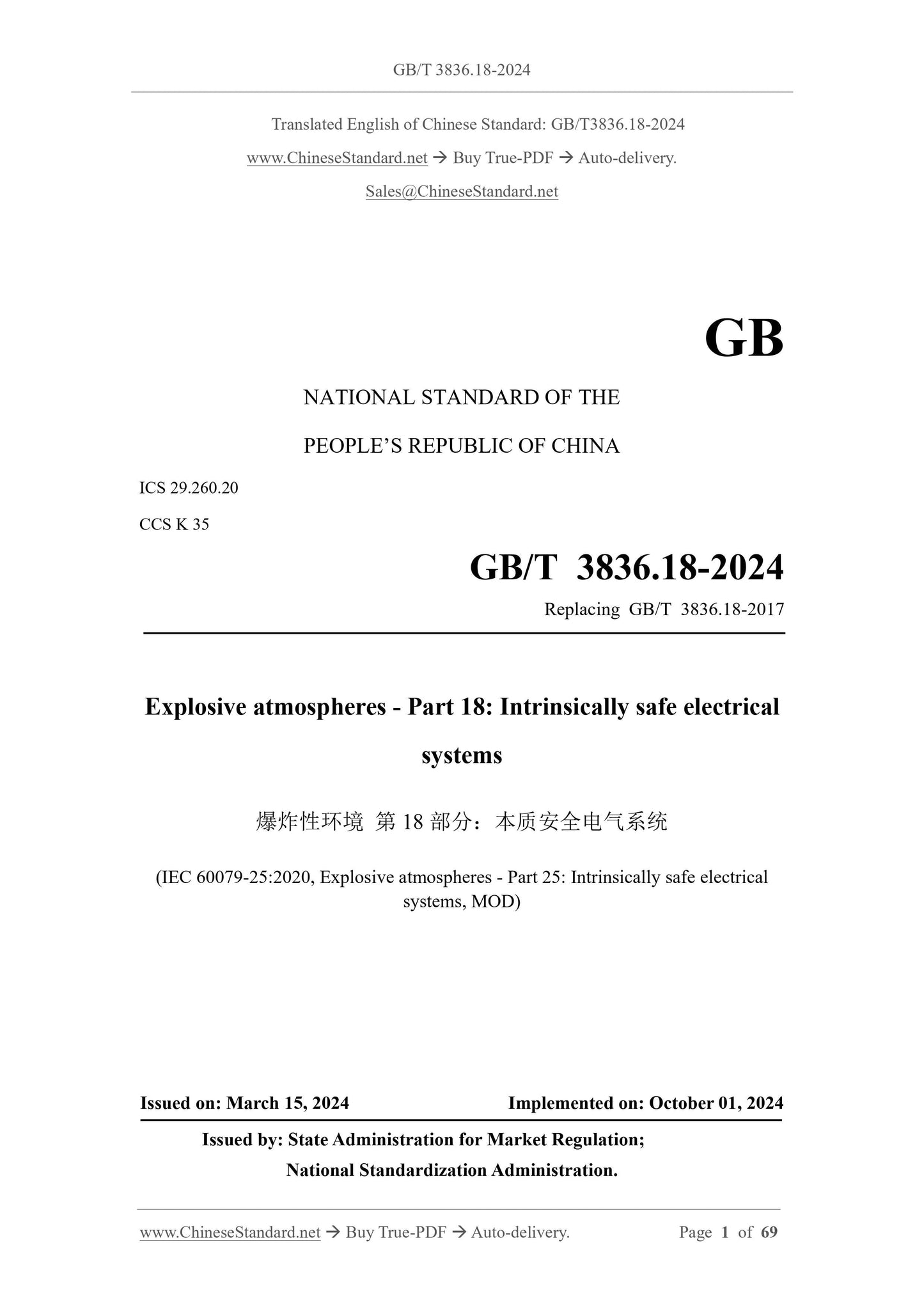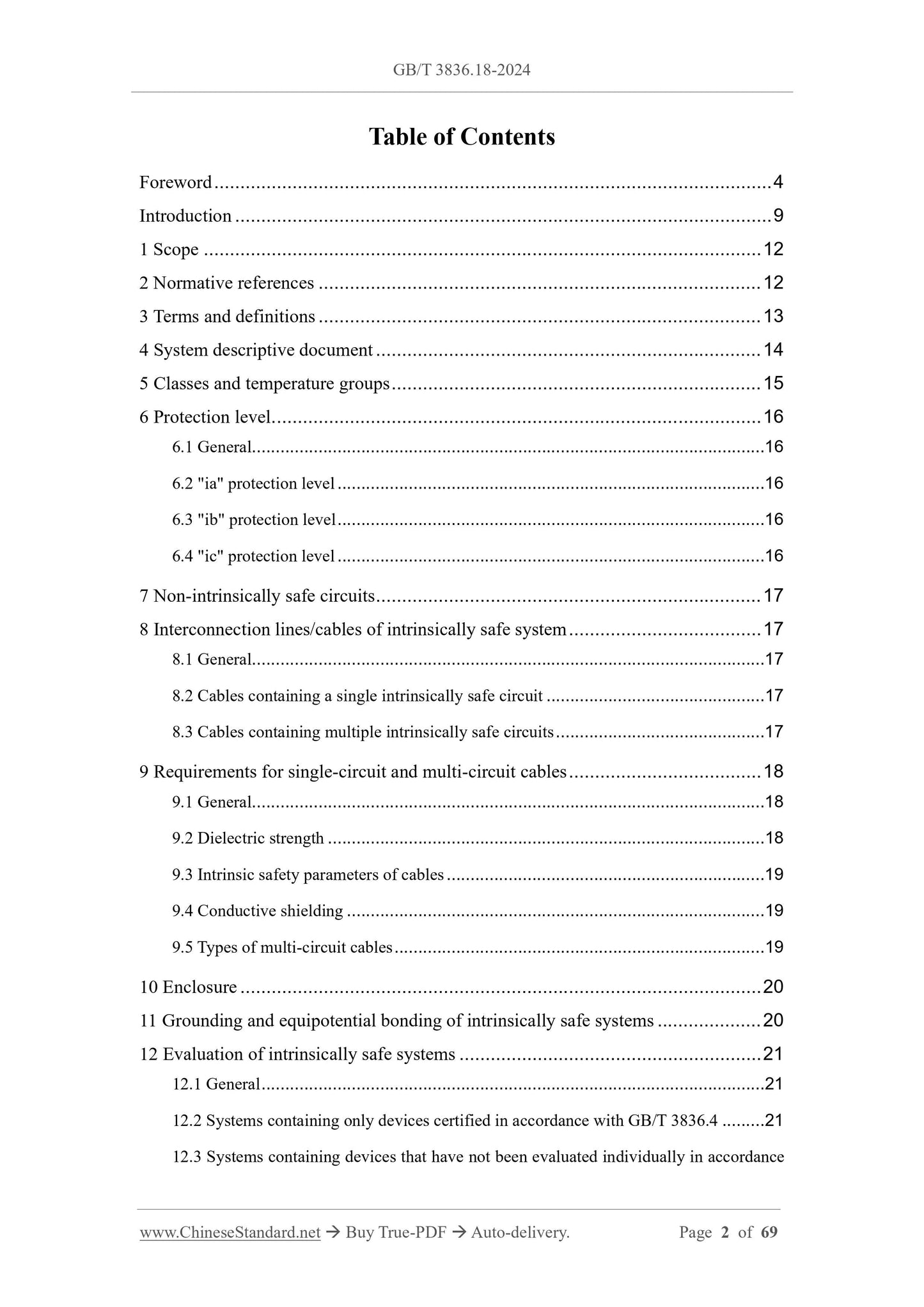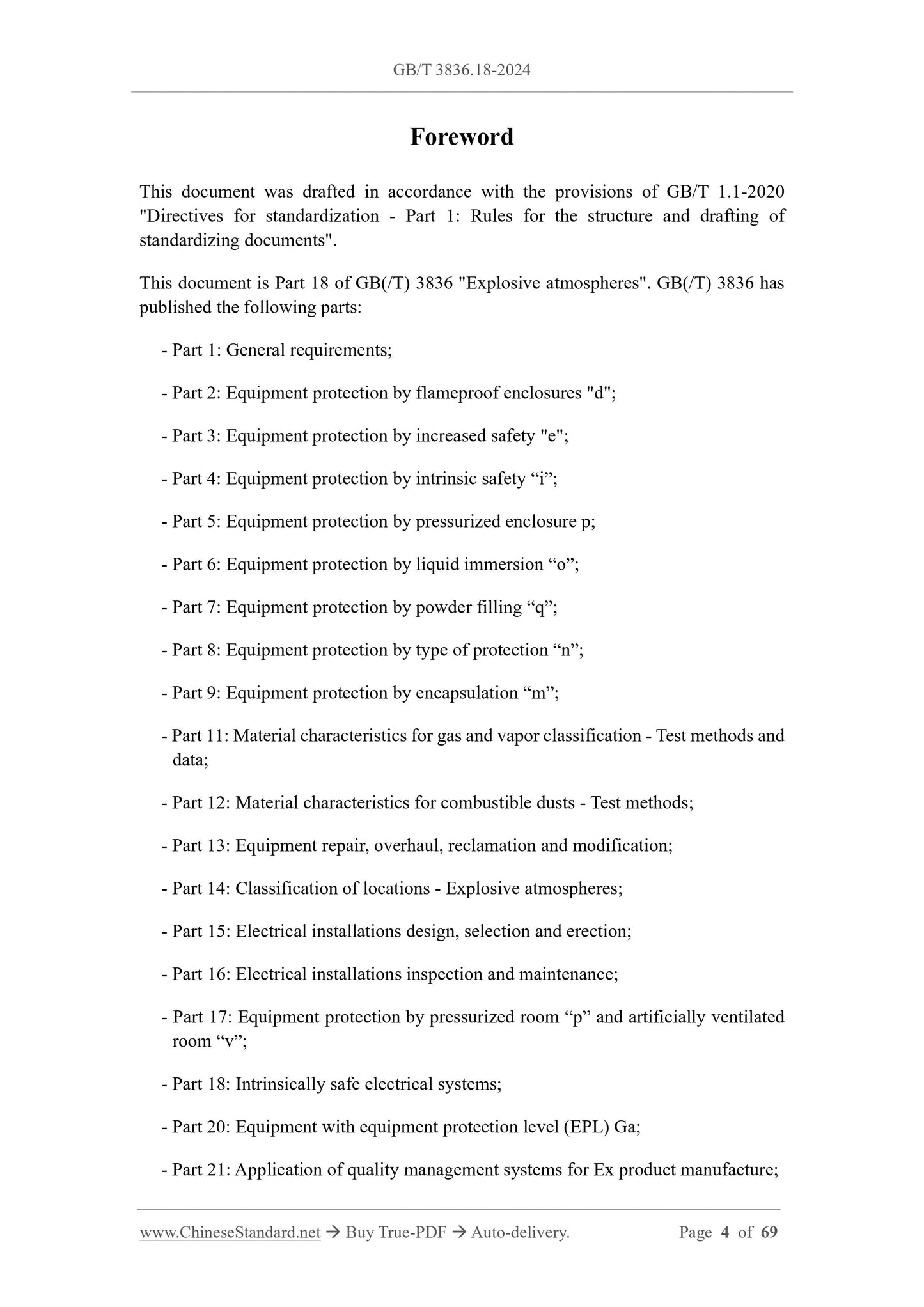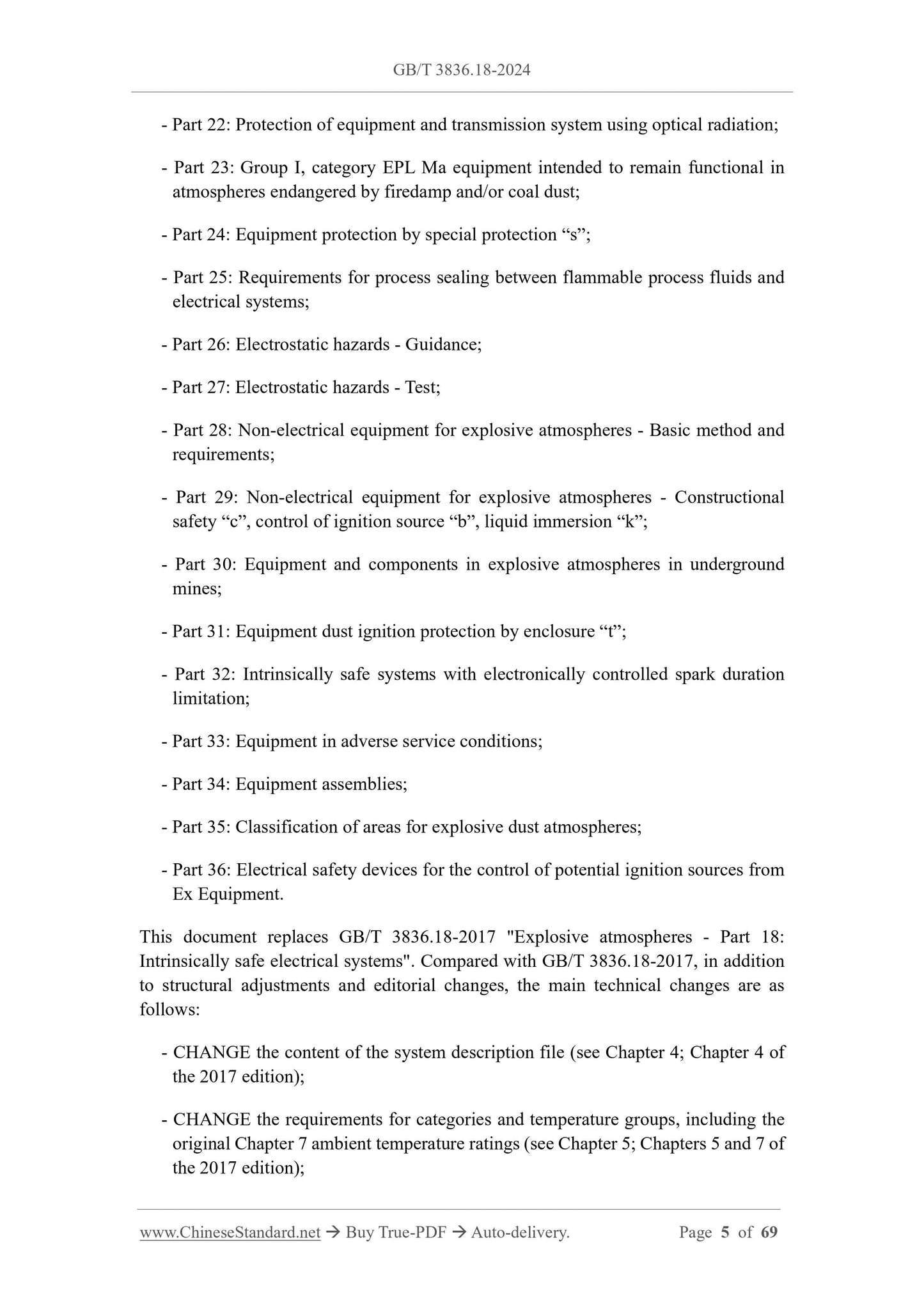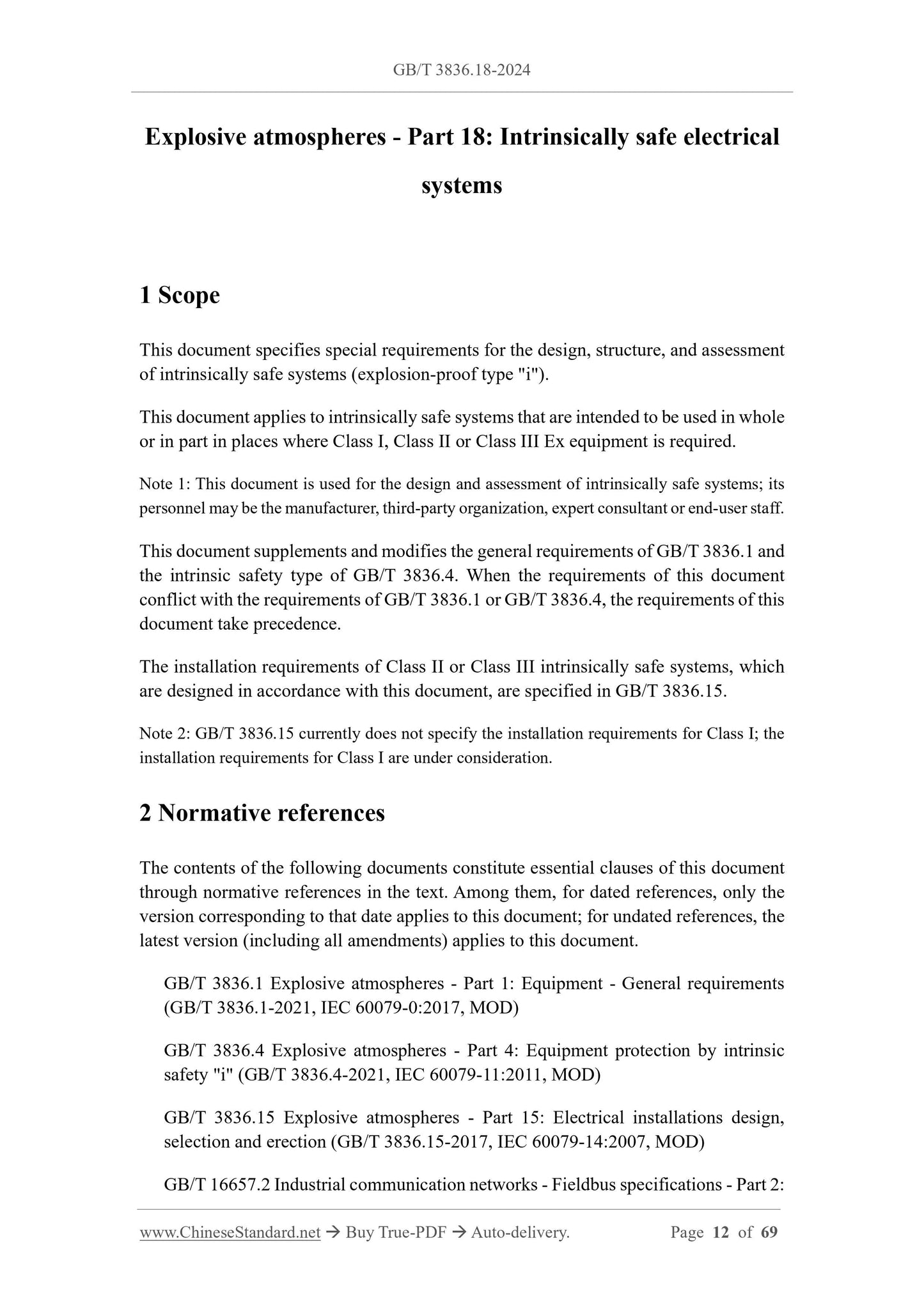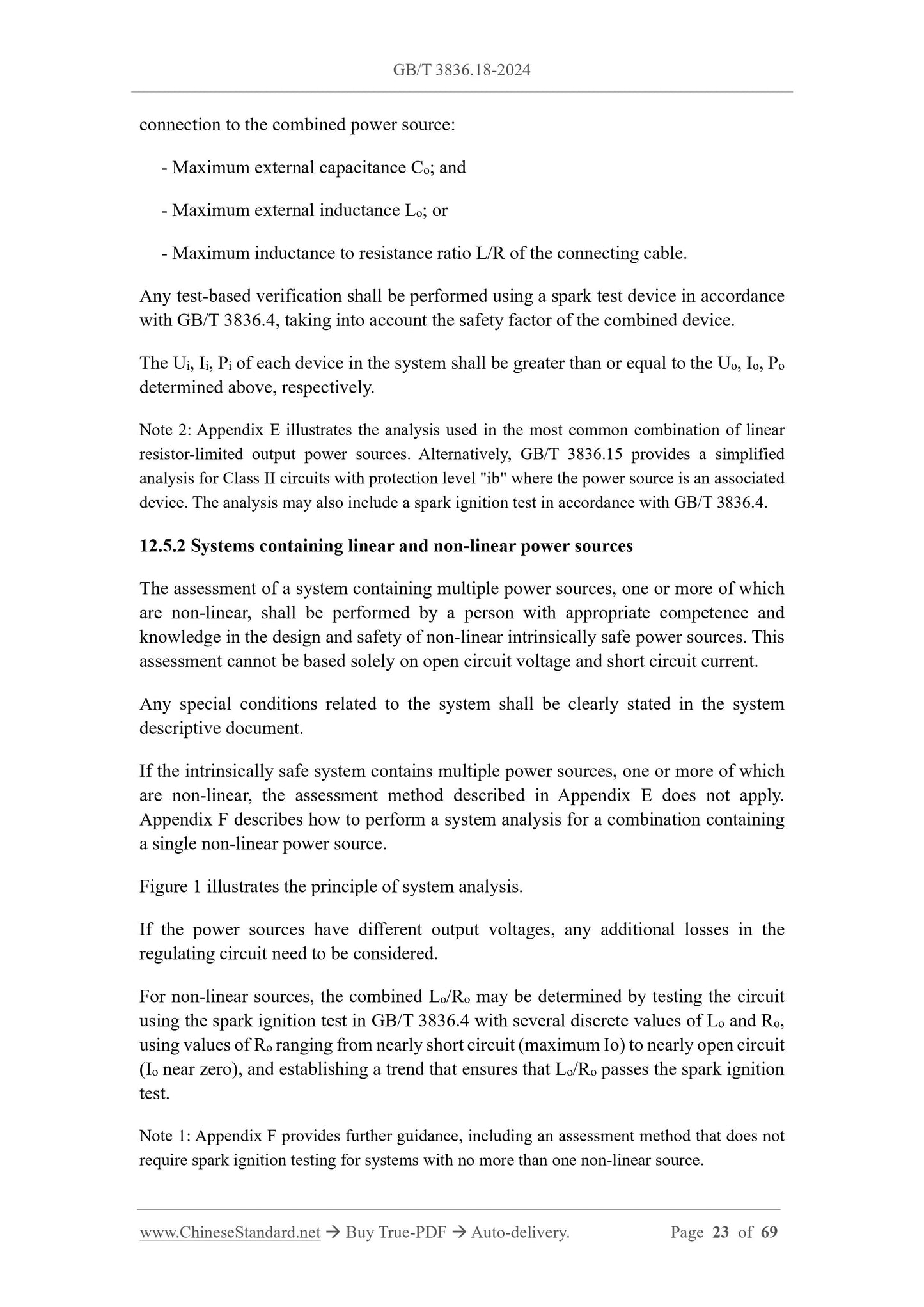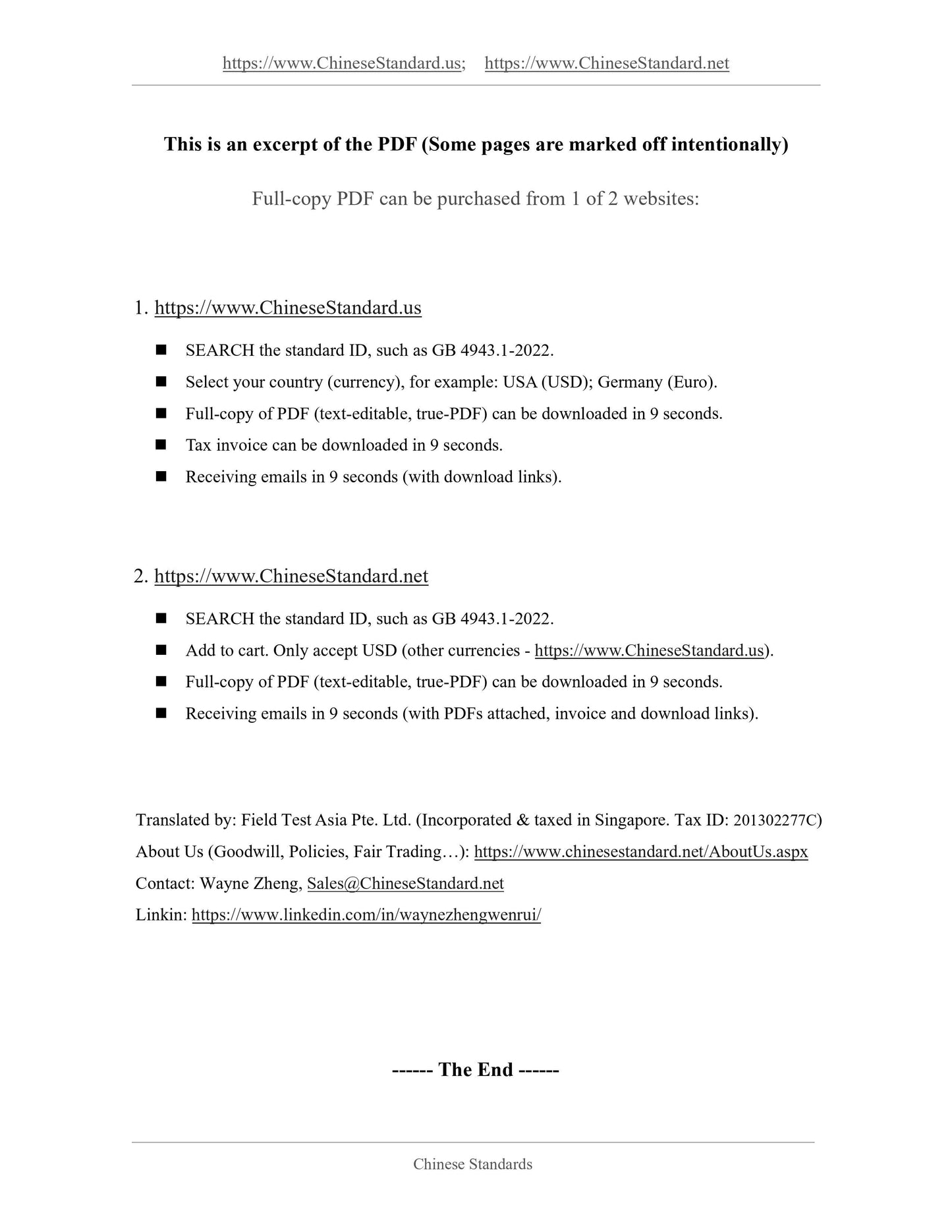1
/
of
7
www.ChineseStandard.us -- Field Test Asia Pte. Ltd.
GB/T 3836.18-2024 English PDF (GB/T3836.18-2024)
GB/T 3836.18-2024 English PDF (GB/T3836.18-2024)
Regular price
$725.00
Regular price
Sale price
$725.00
Unit price
/
per
Shipping calculated at checkout.
Couldn't load pickup availability
GB/T 3836.18-2024: Explosive atmospheres - Part 18: Intrinsically safe electrical systems
Delivery: 9 seconds. Download (and Email) true-PDF + Invoice.Get Quotation: Click GB/T 3836.18-2024 (Self-service in 1-minute)
Newer / historical versions: GB/T 3836.18-2024
Preview True-PDF
Scope
This document specifies special requirements for the design, structure, and assessmentof intrinsically safe systems (explosion-proof type "i").
This document applies to intrinsically safe systems that are intended to be used in whole
or in part in places where Class I, Class II or Class III Ex equipment is required.
Note 1: This document is used for the design and assessment of intrinsically safe systems; its
personnel may be the manufacturer, third-party organization, expert consultant or end-user staff.
This document supplements and modifies the general requirements of GB/T 3836.1 and
the intrinsic safety type of GB/T 3836.4. When the requirements of this document
conflict with the requirements of GB/T 3836.1 or GB/T 3836.4, the requirements of this
document take precedence.
The installation requirements of Class II or Class III intrinsically safe systems, which
are designed in accordance with this document, are specified in GB/T 3836.15.
Note 2: GB/T 3836.15 currently does not specify the installation requirements for Class I; the
installation requirements for Class I are under consideration.
Basic Data
| Standard ID | GB/T 3836.18-2024 (GB/T3836.18-2024) |
| Description (Translated English) | Explosive atmospheres - Part 18: Intrinsically safe electrical systems |
| Sector / Industry | National Standard (Recommended) |
| Classification of Chinese Standard | K35 |
| Classification of International Standard | 29.260.20 |
| Word Count Estimation | 54,546 |
| Date of Issue | 2024-03-15 |
| Date of Implementation | 2024-10-01 |
| Older Standard (superseded by this standard) | GB/T 3836.18-2017 |
| Issuing agency(ies) | State Administration for Market Regulation, China National Standardization Administration |
Share
